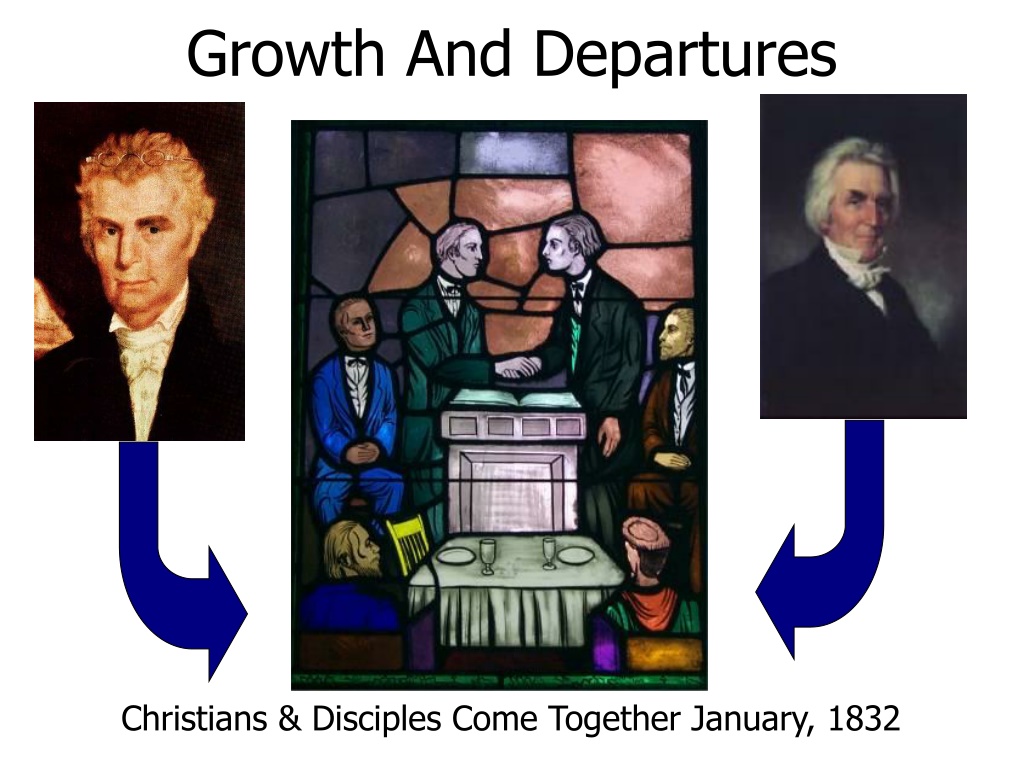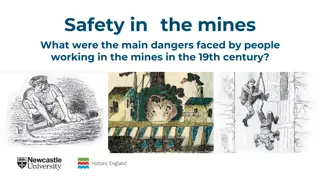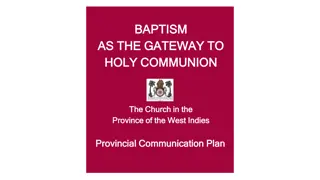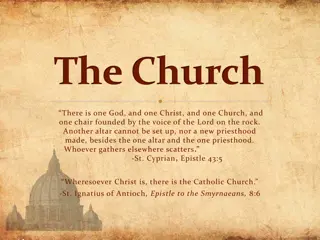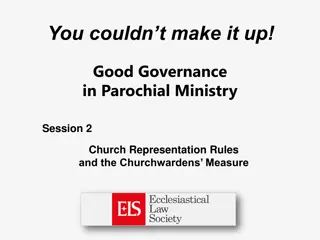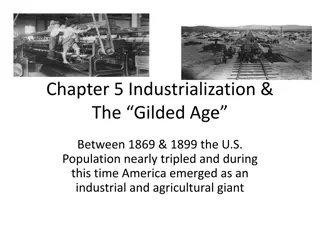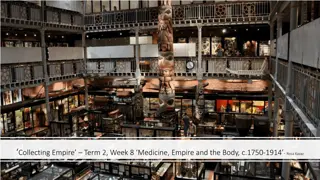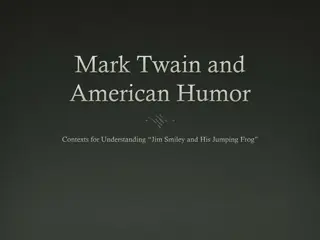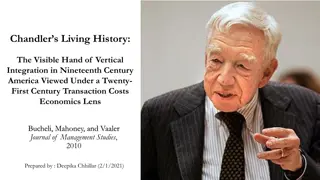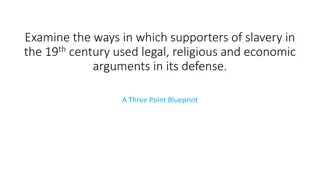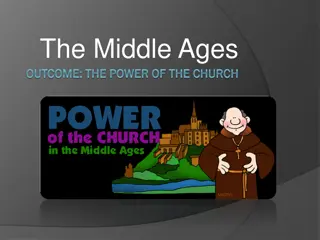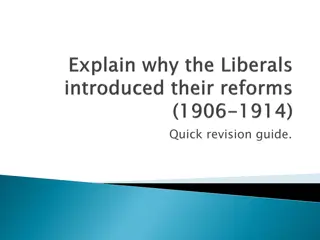Historical Evolution of the Christian Church in the 19th Century
In the 19th century, the Christian church underwent significant changes and developments, encompassing growth, unity efforts, leadership transitions, and challenges such as the impact of the Civil War. Key events include the dissemination of the Disciples' Hymn Book, establishment of colleges, the introduction of instrumental music, and debates surrounding slavery. The church's engagement with societal issues and internal conflicts shaped its trajectory during this transformative period.
Download Presentation

Please find below an Image/Link to download the presentation.
The content on the website is provided AS IS for your information and personal use only. It may not be sold, licensed, or shared on other websites without obtaining consent from the author. Download presentation by click this link. If you encounter any issues during the download, it is possible that the publisher has removed the file from their server.
E N D
Presentation Transcript
Growth And Departures Christians & Disciples Come Together January, 1832
The Good New Spreads During The Years 1832 & 1833 John Rogers & Raccoon John Smith Were Selected To Travel Throughout The Region To Make People Aware That Union Had Taken Place
The Printing Press Contributed To Union B.W. Stone s Christian Messenger & A. Campbell s Millennial Harbinger Distributed The Message Of Union Among Christians, Later Others Like Firm Foundation & Gospel Advocate Continued The Unity Call
Some Highlights Over The Next Few Years 1835 The Disciple s Hymn Book Is Distributed Bearing The Names Of B.W. Stone, Alexander Campbell, Walter Scott & John T. Johnson 1836 Bacon College Begins With Walter Scott As First President, Georgetown, Kentucky 1841 Bethany College Begins 1844 Nov. 9, B.W. Stone Dies In Hannibal, Missouri, Later Re- Interred At Caneridge, Kentucky, Christian Messenger Ceases Publication 1845 January 1, Franklin College, Nashville, Tennessee Begins 1858 Bacon College Becomes The University Of Kentucky At Harrodsburg, Kentucky, Moved To Lexington In 1865
Changes Causing Digression 1849 Development Of The American Christian Missionary Society 1860 Introduction Of Instrumental Music At Midway The Pastoral System In Congregations Alternative Ways Of Raising Money
The Incident At Midway, Kentucky Adam Hibler Grave L.L. Pinkerton Grave
The Church During The Civil War Leading Up To The War Discussion Of The Slavery Issue Was Discussed In Journals Some Like James Shannon In Missouri Were Strong Activists For Slavery Others Like Pardee Butler Of Kansas Was Equally Strong Activist Against Slavery Mississippi Preacher, T.W. Caskey Was Involved In Preparation Of The Document Leading To Secession In That State, 1861 During War Many Lost Their Faith Many Enlisted In The Military, Preachers Became Chaplains Fanning Visited Atlanta. Dr. A.G. Thomas, A Preacher, Wore A Feather In His Hat And A Glittering Sword In His Right Hand. Fanning Said He Doubted If Thomas Would Be Able To Hold The Word Of Georgia In One Hand And The Sword Of The Spirit In The Other GA Vol VII, No. 2, Feb. 1861 p.39 W.H. Hopson Resigned His Post At Main Street Church Of Christ Lexington, Kentucky Because Of His Disposition Toward The South. J.W. McGarvey Took His Place, 1862
The Church During The Civil War 250 Boys From Hiram College Joined The Union Forces James A Garfield Was A Union Acquiring Rank Of Brigadier-General T.B. Larimore Served With The Southern Forces B.F. Hall Was Chaplain With The Texas Rangers Colleges & Publications Sought To Ignore The War Refusing Anti-War Articles To Be Printed W.D. Carnes Sought To Keep It Out Of Franklin College, But When War Was Began The Entire Student Body Left, Joining The South 1860, Fall Arkansas College Began At Fayetteville, William Baxter President, Battles At Pea Ridge And Prairie Grove Was Fought Nearby. School Burned Preachers Avoided It In Their Preaching Many Journals Ceased Publication For Economic Reasons Biggest Wedge Was When The Missionary Society Condemned The South, Southern Brethren Were Appalled, 1862 Officially The Churches Of Christ Was The Only Church In The US Not To Split During The Civil War
After The Civil War Many Issues That Were Before The War Started Up Again ACMS & The Instrument Of Music In Worship Next 40 Years Takes Its Toll Can Christians Fight In War Or Participate In Governmental Activities e.g. President Garfield Alexander Campbell Dies March 4, 1866 1866 Christian Standard Begins With Isaac Errett As Editor Devoted To A More Progressive Approach To Christianity 1866 The Gospel Advocate Restarts With Tolbert Fanning And A Young David Lipscomb As Co-Editors 1869 Henderson, Tennessee, Henderson Male & Female Institute Begins, Root School Out Of Which Would Later Come Freed-Hardeman University
Sand Creek Meeting August 18, 1889, Shelby County, Illinois An annual gathering place of conservative Disciples since 1871 Above 6000 in attendance Daniel Sommer (1850-1940) presented the gospel in two speeches Speech one outlined the differences that took place within the disciples movement Speech two, in the afternoon, was an evangelistic sermon A formal signing of a written declaration to separate from liberal Disciples was signed
Sand Creek Meeting Sommer discussed the intention of the Declaration and Address of September 7, 1809 by T. Campbell He reviewed the distinctive position of Disciples between faith and opinion, and between testimony and inference He then discussed the effect it had on the Disciples - - Two Different Approaches Since 1832 Men who held that the plea for unity at all costs was paramount Men who regarded the restoration principle as paramount Lastly, a bold charge that the former had abandoned soundness, and through innovation had produced evils plaguing the brotherhood
Sand Creek Meeting Sommer Charged Disciples Innovation Included: One-Man Pastorates Missionary Societies Modern Methods of Raising Money Ladies Festival in one Ohio church to raise money for curtains and carpet for the meetinghouse Children with brown jugs on begging expeditions Box Suppers and Pound Parties Instrumental Music In Worship Claimed That Urban Churches Were The Main Culprits In This Departure
Class Religious Authority Conservatives Faith/Testimony Liberals Opinion/Inference Church Government Plurality Of Bishops One-Man Pastorate Preaching The Gospel Through The Church Through Missionary Society Finances Giving Through Simplicity Fairs, Festivals & Begging Breakdown Of Movement Music Congregational Singing Instrumental Music Character of Members Poor, pious, simple, humble, peace-loving, honest Rich, shameless, arrogant, divisive, usurpers of other men s labors
Seven Signs The Brought Separation Tears Shed By Loyal Christians Angry and unchristian words and actions from liberals Strifes and alienations Divisions Lost opportunities to save souls Expenditures of time, money and strength Feuds, heartburning and heartbreaking
After The Civil War 1874 Tolbert Fanning Dies At Elm Crag, Nashville, Tennessee 1884 Firm Foundation Begins In Austin, Texas, Austin McGary Editor 1891 Nashville Bible School Begins, Later Lipscomb University In The 1906 U.S. Census The Church of Christ And The Christian Church Was Recognized As Different Entities
Splintering Continues In The 20th Century March, 1917 Major Controversy In The College Of The Bible Exists Over The Subject Of Higher Criticism, Leading To A Major Split Among Christians, Enter: The Disciples Of Christ 1920s Controversies With R.H. Boll Over Premillennialism 1930s & 40s Relative Quietness Due To Economic Depression & War 1950s To 1970s Battles Over Support Of Institutions/Sunday School/Located Preachers/Christian Colleges/etc. 1980 To Today The Change Movement New Hermeneutics/Worship Styles etc.
